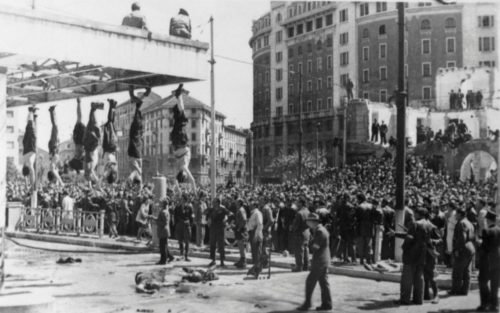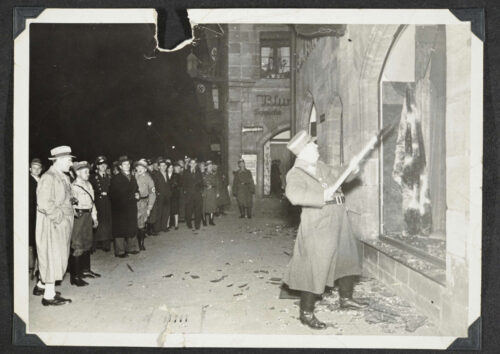Analysts have shifted to asking how far Ukraine might go in liberating people from the brutality of Russia’s “masculine” rhetoric and occupation.
“Ukraine has the initiative and momentum and is dictating to the Russians where and when the next fight will be,” said Philip Ingram, a former senior British military intelligence officer. […] Mile after mile of abandoned trenches along the road to the southern port city of Kherson spoke of the miserable living conditions some Russian forces had to endure on the right bank of Kherson before their retreat.
The same article shows how the American government is laying sound political and military sentiment on the heels of such retreat.
“This whole notion, I think, in the Western press of ‘When is Ukraine going to negotiate?’ misses the underlying fundamentals, which is that Russia continues … to make these outlandish claims about annexed Russian territory,” [White House National Security Advisor Jake Sullivan] said.
The key to asking when it might end, is when Russia may finally admit its occupation will end.
After all, it’s led to a situation where Russian men run are on the run from their own country.
Fighting-age men in Russia are still hiding in fear of being sent to war
It’s clear Putin doesn’t care for Russian men, while telling them they should jump forward and die for him in a foreign country. Does anyone really believe if Putin can’t even care for the welfare of Russians that he somehow cares for the people in Crimea being forcibly occupied by Putin’s conscripts?
You have to really marvel at such a serious disconnect. Perhaps later I’ll write about how this fits a pattern of Putin since the 1980s, as he’s tried for decades to cultivate thoughtless brutality as strategy. Ultimately, just like when Putin was running KGB operations in East Germany to breed neo-Nazi cells, his toxic “masculinity” strategy has resulted in men being afraid of coming out of hiding.
It couldn’t have been any clearer than when Putin just attempted to mobilize 300,000 in Russia, and instead saw nearly that many immediately exit its borders in protest.
Why should they lose their lives for him? I’ve pointed out this failure of Putin before and warned his day of reckoning was coming, although I admit I had no idea it would be in Ukraine. In fact, I told people Putin couldn’t be so stupid as to roll into Ukraine (even on the day before) because it seemed so obvious how Russia’s military would fail. Whoops. I guess that was only partially right.
The dictator’s obsession with promoting himself over everything completely backfired. Loyalty to him is more empty than ever and because he allowed no other loyalty to grow, not even “motherland” rhetoric, that country is rudderless.
It’s something of a similar fate for toxic “masculine” leaders in America, who aligned themselves with Putin (e.g. many in the GOP) and peddled constant nonsense about fear and being scared. It’s worse in Ukraine of course as Russian men pressed into Putin’s “meat-grinder” have basically been armed only with rusty shovels (not an exaggeration) to dig their own graves and then fall into them dead.
That’s some Hitler-level stupidity and a predictable outcome of fear-based bogus “masculine” propaganda.
The German Nazis (especially children drafted into battle) were literally convinced they would be killed if they surrendered, so they hid in trenches and bunkers.
British soldiers in WWII recount finding Nazi teenagers scared, hiding and sobbing in tears — poor kids had been brainwashed to think everyone was out to kill them. Proper care once under the command of Allied liberators blew their minds, allowing them to be thoughtful once again.
Thus we’re watching as a whole generation of Russian men may be lost at this point in Putin’s tragic folly, unless they hide and surrender to Ukraine.
It even has led to widespread protest by the people who actually show some sense of care for Russian men: women.
Russian women march to Ukrainian frontline to demand husbands be sent home
In conclusion it begs a tough question whether Russian women should decide when, where and how to negotiate with Ukraine. Maybe set that as a goal for Putin: what woman will you appoint to lead any negotiation?
Women in Russia seem to be the only ones being thoughtful right now. They show much better ideas about Russia’s best interests… versus Putin’s toxic masculine clown show.
I’m somewhat reminded of Henry Ford getting a medal from Adolf Hitler in 1939 then losing more and more authority at work while refusing to admit being wrong; all 50,000 autoworkers walked off the job in 1941 asking why their CEO was on the side of Nazis. Henry was stumped completely until an end of his crisis eventually was negotiated by his wife.
And I don’t just mention the connection to Ford idly here. The emasculation of men, due to industrialization causing massive cultural shifts through the early 1900s, was one of the driving forces behind the rise of fascism in the 1930s. People wanted to orient around “masculine” safety, but instead attached themselves to toxic charlatans.

Bogus promises by notorious “strong men” who promised they would lead through times of uncertainty, doubt and hyperbolic fear turned out to be mostly snake-oil and disinformation (breeding hate) to unjustly rise into power yet avoid accountability for mass harms.












